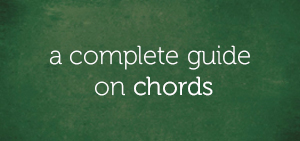If you’re interested in getting some basic information on the tone of disjunction, you’re on the right page.
Attention: I want to assume that you’re already familiar with the major scale. If this isn’t the case, then this lesson is not suitable for you. You may have to pause now, then read this lesson on the major scale before you proceed.
I would have jumped right into showing you the tone of disjunction.
But I’ll prefer to grab you by the hand and show you step-by-step, starting from the concept of tetrachords. The reason why we have to start from tetrachords is because if there are no tetrachords, there won’t be a tone of disjunction.
Alright! Having said that, let’s take a look at the concept of tetrachords before we go any further.
A Quick Review On The Concept Of Tetrachords
A closer look at the C major scale:
…you’ll notice that there are eight notes: C, D, E, F, G, A, B, and C.
On string instruments like the violin (with four strings, the entire major scale is played using two strings. Four notes to a string:
C, D, E, and F to a string, then G, A, B, C to another string
Playing “four notes to a string” is what the term tetrachord means. Tetra means four while chord means string. So the term tetrachord means “four notes to a string”.
The first four notes of the C major scale (which are C, D, E, and F):
…are described as its lower tetrachord, while the last four notes (which are G, A, B and C):
…are its upper tetrachord.
Attention: Keep in mind that both tetrachords of the major scale are identical; having half-steps between the third and fourth tone.
The Tone Of Disjunction — Explained
I know the tone of disjunction sounds like a very complex theoretical term that only scholars use. But its meaning is simpler than it sounds.
To understand the tone of disjunction, you’ll have to be familiar with the tetrachords of the major scale: the upper tetrachord and the lower tetrachord.
So, here’s a definition for the tone of disjunction:
The tone of disjunction is the
In between the lower tetrachord and the upper tetrachord of any given major scale is the tone of disjunction. If you take a look at the lower and upper tetrachords of the C major scale:
Lower tetrachord:
Upper tetrachord:
…you’ll observe that in between the last tone of the lower tetrachord (which is F) and the first tone of the upper tetrachord (which is G) is a whole step or tone:
F (the last tone of the lower tetrachord):
G (the first tone of the upper tetrachord):
F-G (a whole step or tone):
So, the tone of disjunction is the remaining part of the major scale that lies in between the tetrachords. So, in the C major scale, we have two tetrachords:
Lower tetrachord:
Upper tetrachord:
…separated by the tone of disjunction (which is between F and G in this case):
The tone of disjunction:
Final Words
Every major scale consists of two tetrachords that are separated by a tone of disjunction.
In a subsequent lesson, I’ll tell you why it’s called the tone of disjunction and how your knowledge of the tetrachord and the tone of disjunction can help you play any major scale.
See you then!
Chuku Onyemachi
Latest posts by Chuku Onyemachi (see all)
- The Formation Of Diminished Seventh Chords Used To Be Challenging Until I Did This
- How To Form Seventh Chords In Two Shakes Of A Dog’s Tail Using Third Intervals And The Circle Of Fifths Chart
- I Played The 13sus4 Chord And This Happened…
- How To Build Seventh Chords Like An Architect Using “Foundation And Structure” Concept
- This 4-Week Plan Will Help You Master All The Major Scales







Comments on this entry are closed.